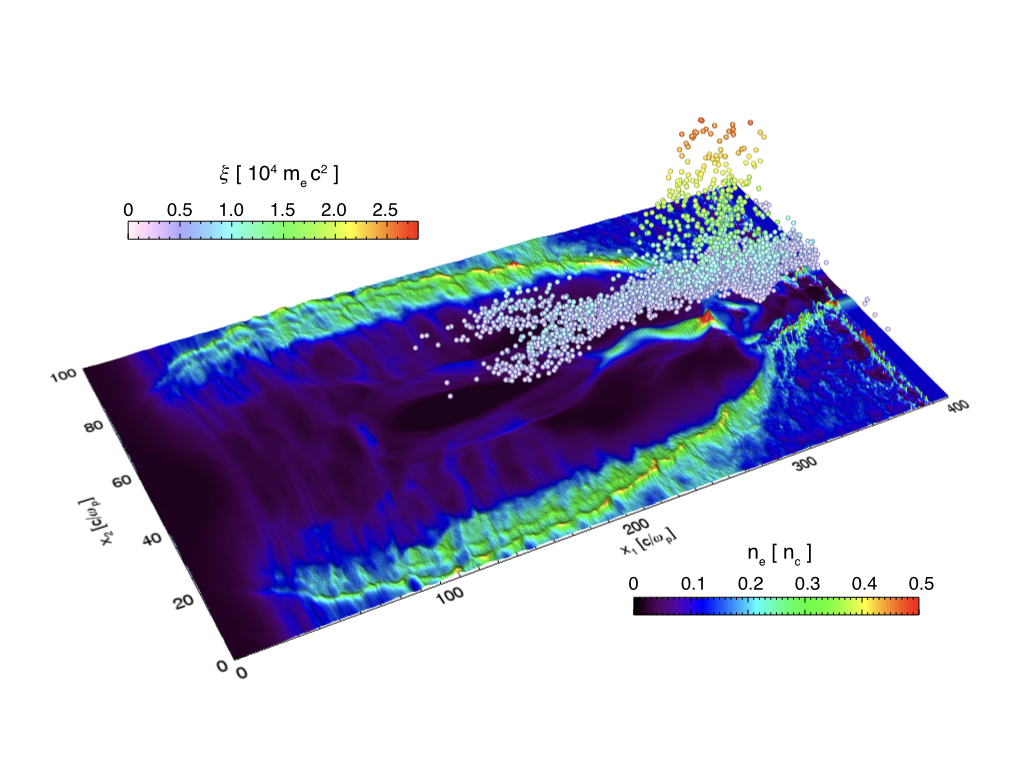Electrons surf the pipe!

The figure shows electron plasma density and the energy of trapped electrons (for clarity, we show only a random sample of particles with energy over 1 GeV). The channel wall density is about 30 – 40 % of the critical plasma density (the density opaque for laser light), while in the inside of the channel the plasma density is below 5 % of that value. This structure guides light such that most of the energy travels through the low-density region.
Due to the high laser intensity (a0 ~ 600, I ~ 5 x 1023 W/cm2 ), the interaction between the light and plasma electrons is highly nonlinear. The electrons quiver in the laser field, while at the same time being affected by the collective plasma electromagnetic fields formed within the channel. In addition to the inherent nonlinearity of the interaction, relativistic electrons also emit high-frequency radiation. Sometimes, they convert a considerable fraction of their energy to photons. The electrons then slow down, but they can be re-accelerated by the intense laser field.
Curiously, the electron energy loss due to emission (also called “radiation reaction”) helps the electrons to attain multi-GeV energies. This happens because the radiation reaction facilitates efficient trapping of the electrons in the centre of the light pipe, which puts them in ideal conditions for acceleration.
Fore more information, see M. Vranic et al., Extremely intense laser-based electron acceleration in a plasma channel, , Plasma Physics and Controlled Fusion 60, p. 034002 (2018), available here.








